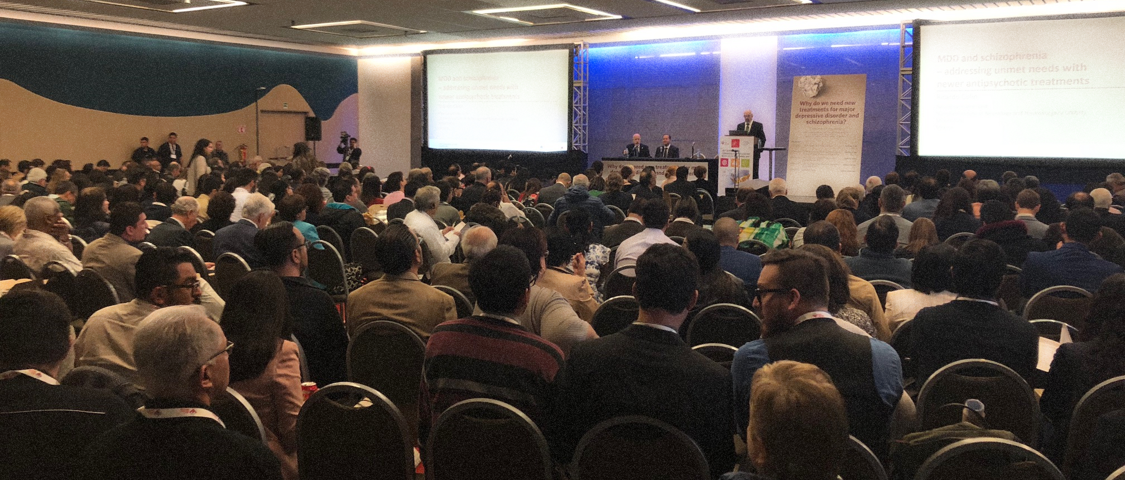
Choose a channel
Check out the different Progress in Mind content channels.

Progress in Mind


Major depressive disorder (MDD) and schizophrenia share in common the side effect burden associated with many available treatments which prevent patients from achieving their treatments goals, especially functional recovery. Dopamine D2 receptor partial agonists, developed with both efficacy and tolerability in mind, are reported to offer new treatment options both in schizophrenia and in the adjunctive treatment of MDD.
Despite the availability of effective antidepressants, about half of patients with MDD do not achieve an adequate clinical response – as defined by a 50% or greater reduction in depression symptoms and as measured via a well-accepted depression rating scale,1 said Ricardo Colin (National Institute of Neurology and Neurosurgery, Mexico City) during a major educational symposium held as part of the WCP in Mexico City. Despite treatment, many patients continue to experience impaired social functioning and quality of life.2
One effective option in such patients – and an alternative to switching or adding another antidepressant -- is to augment treatment with an atypical antipsychotic. Such adjunctive therapy is supported by high quality evidence,3 he said.
Similarly, in schizophrenia, many treatments (although reasonably effective, particularly in the control of positive symptoms) do not fully achieve patient goals. One reason, Ricardo Colin argued, is that the side effect burden of many antipsychotics can lead to poor quality of life,4 and in turn lead to poor adherence. Activating, sedating and metabolic effects are among the adverse events experienced more frequently.
Atypical antipsychotics have been developed with the aim of adding to existing treatment options in both MDD and schizophrenia. One such class is the dopamine D2 receptor partial agonists, thought to modulate the dopamine neurotransmission system - pending the level of endogenous dopamine - and leading to efficacy with fewer undesirable side effects, Dr. Colin said.5
Dopamine D2 receptor partial agonists have been developed with both tolerability and efficacy in mind
“What are we looking for in the treatment of schizophrenia?” asked Leslie Citrome (New York Medical College, Valhalla, New York, USA), who picked up this thread for further discussion. Treatment goals included symptom resolution, relapse prevention, benign side-effect profile, improved functioning, and good adherence to treatment. But, if achieving each of these goals appear ideal, the reality is that treatment choice may involve trade-offs – notably between efficacy and side effects, he acknowledged.
That being said, the diversity in receptor profiling of the several antipsychotics approved – both from a binding affinity and intrinsic activity standpoint - offers a meaningful treatment choice to patients. Although efficacy is broadly comparable across agents,4 the tolerability profile is not, with D2 receptor partial agonists resulting in a lower side-effect burden in relevant domains.
Variety in receptor pharmacology profile means we have a meaningful choice of treatment
Activating, sedating and metabolic effects are common causes of concern.7,8 Taking into account the side-effect profile of a particular treatment, which varies according to receptor profile, is part of taking patients’ needs and preferences into account, Professor Citrome argued.
To encourage the widely-accepted goal of individualizing therapy, he distinguishes between various groups of patients. There are, for example, people with:
For each of these groups, and even when comorbidities overlap, the D2 receptor partial agonist approach may offer valuable option in the acute and maintenance treatment of schizophrenia, he concluded.
Gustavo Alva (ATP Clinical Research, Costa Mesa, California, USA) discussed the theme of the reduced well-being seen in many depressed patients who do not respond adequately to treatment with antidepressant medications.9 The absence of full remission means poor work functioning and increased social and economic costs.10 Symptoms of anxiety, which are common in MDD, decrease the likelihood of response to antidepressants, Professor Alva suggests.11
For MDD patients who do not achieve good function, adjunctive treatment may help patients to achieve better function
For MDD patients who do not achieve good return to function, adjunctive treatment with an antipsychotic is an option, Gustavo Alva suggested. In short term-trials versus an adjunctive placebo (antidepressant monotherapy), augmented antipsychotic treatment has shown greater improvement as measured by the Sheehan Disability Scale,12 as well as by change on the MADRS.13-16 And open-label studies lasting up to 52 weeks have shown sustained improvement in clinical symptoms among patients on adjunctive therapy.17
This Symposia was conducted with educational financial support provided by H. Lundbeck A/S.